RARE! WWII 1942 Operation Cartwheel New Georgia "Solomon Islands" Pacific Theater Combat Map

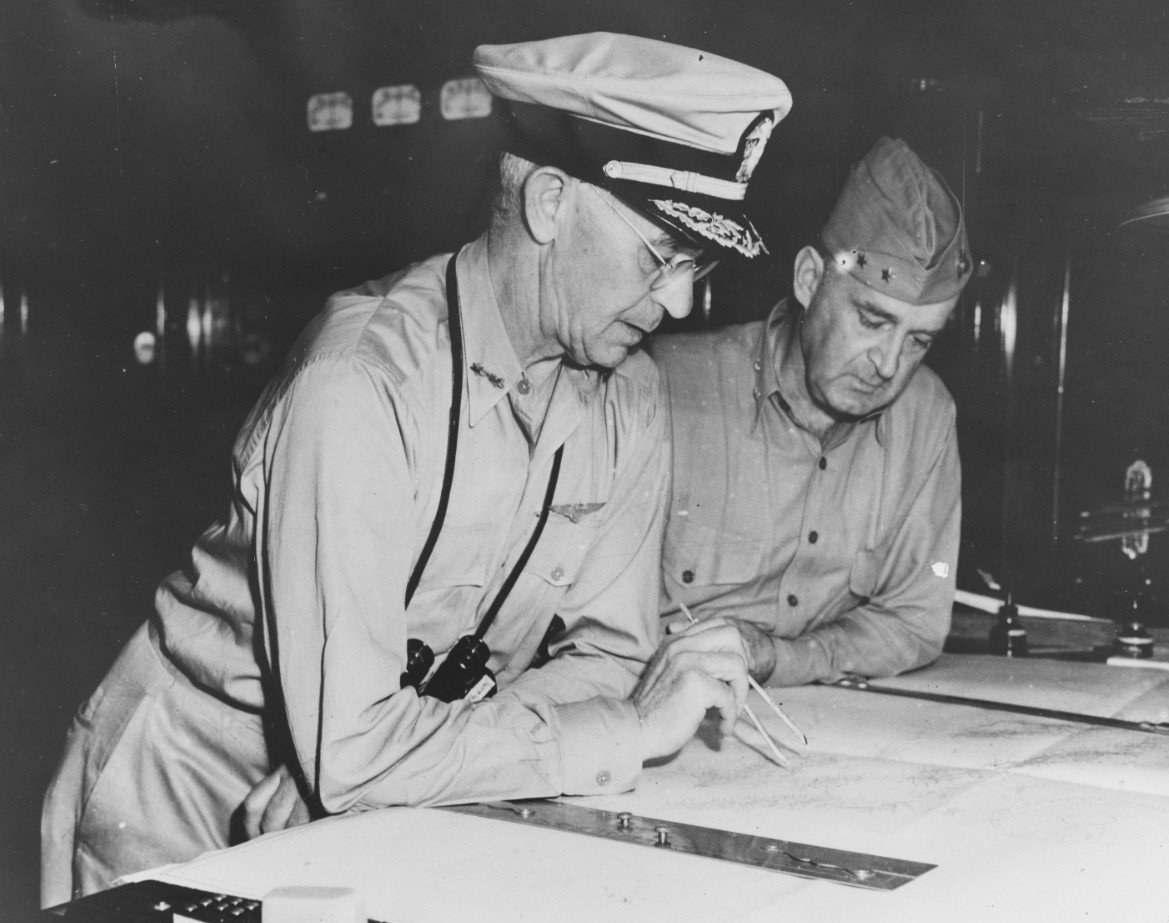





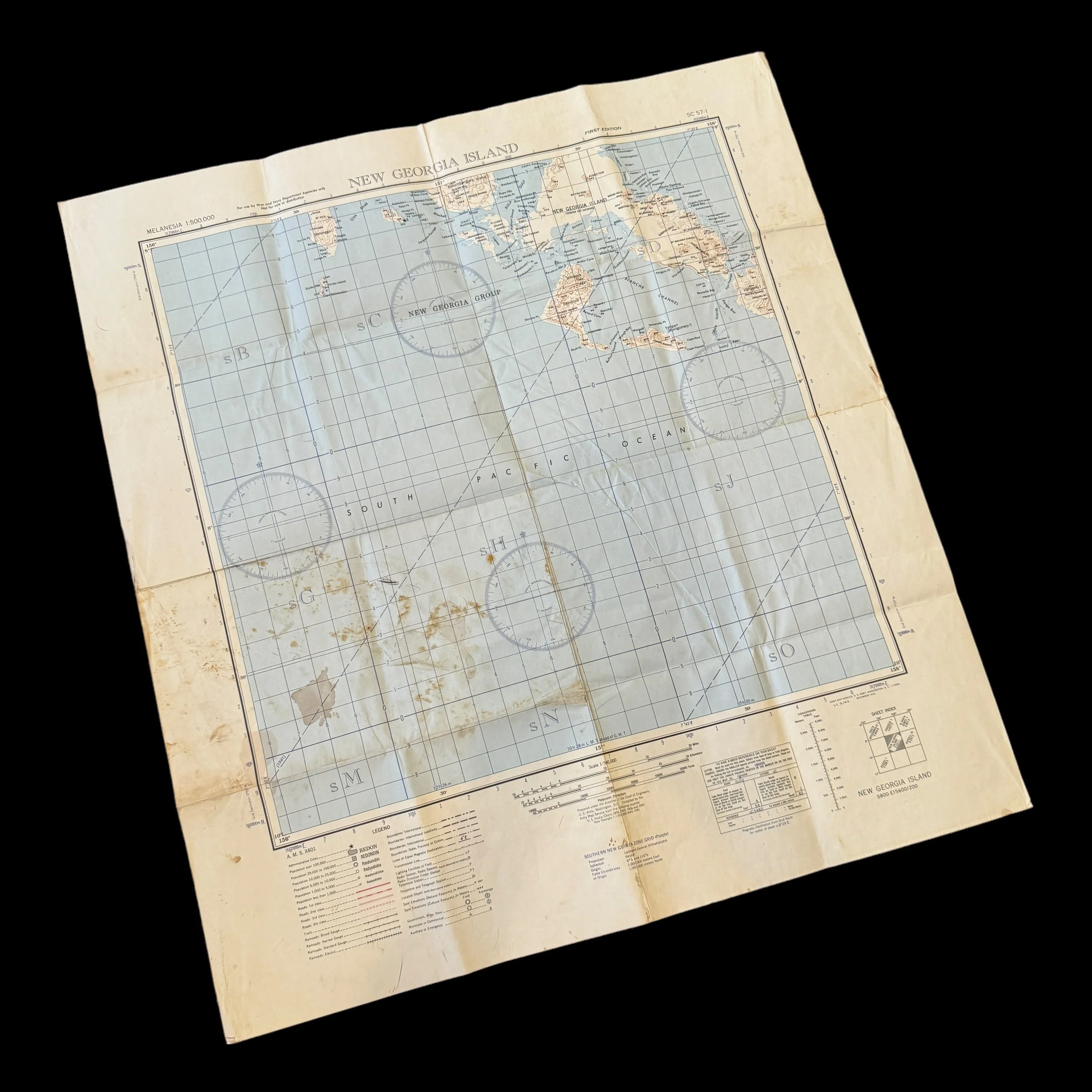

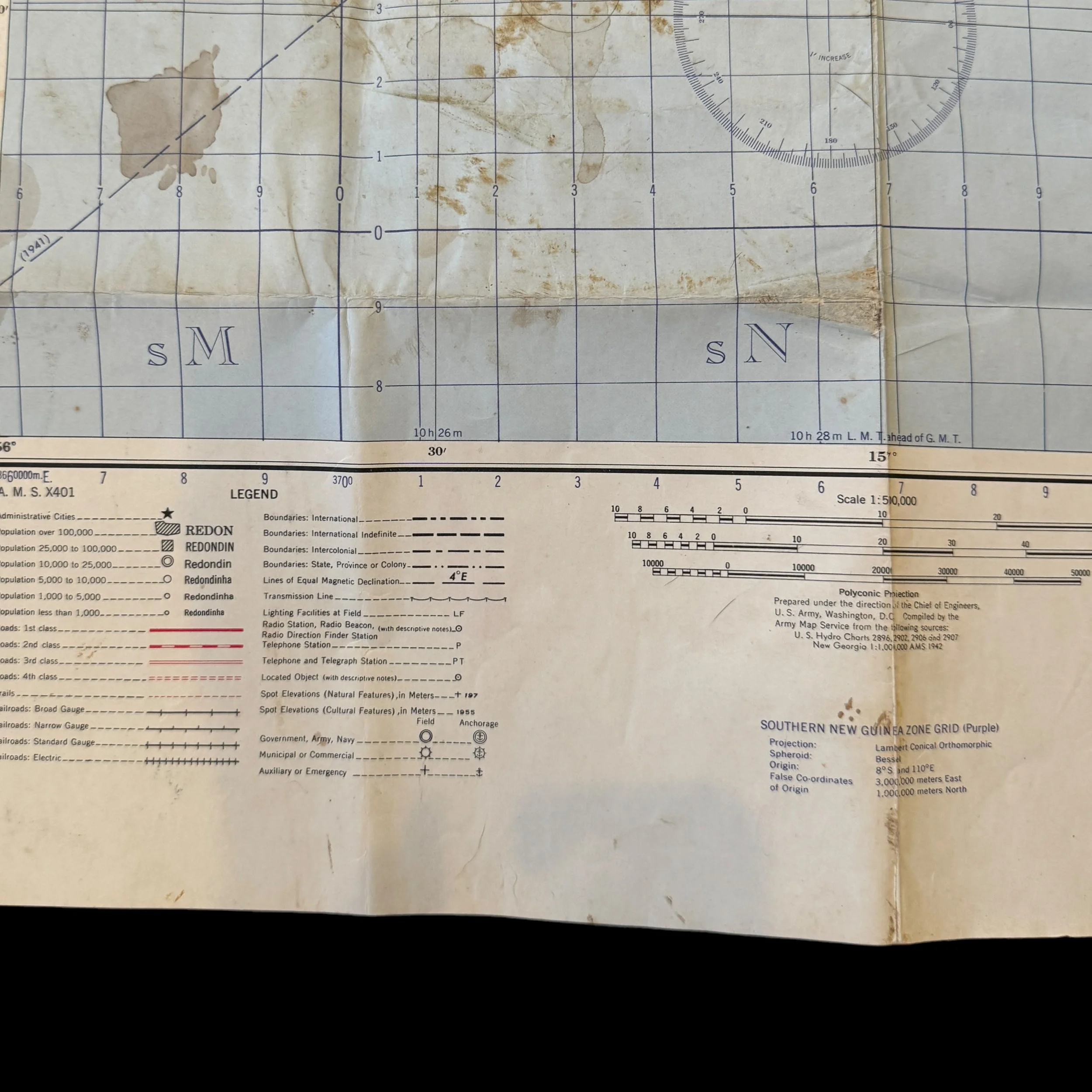

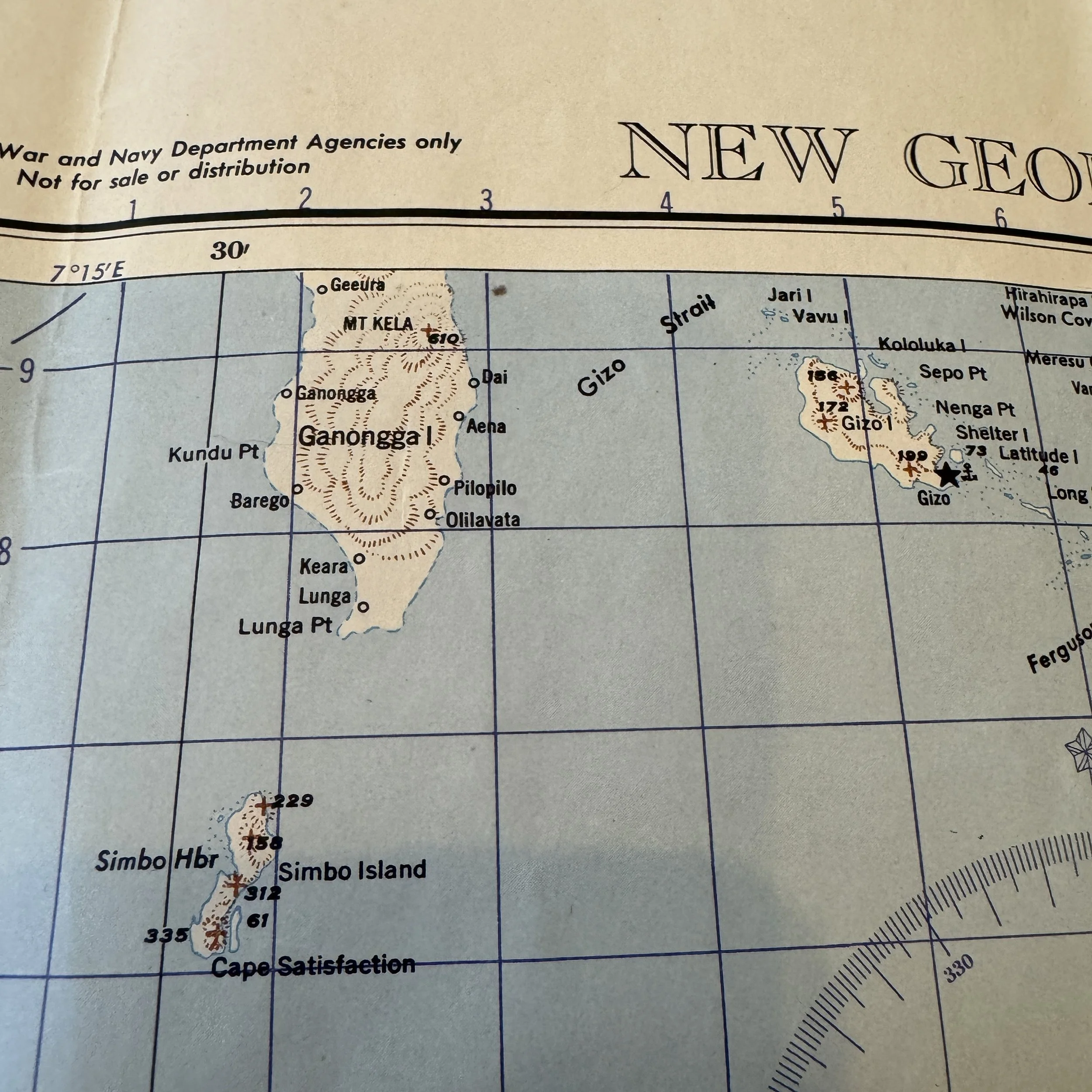


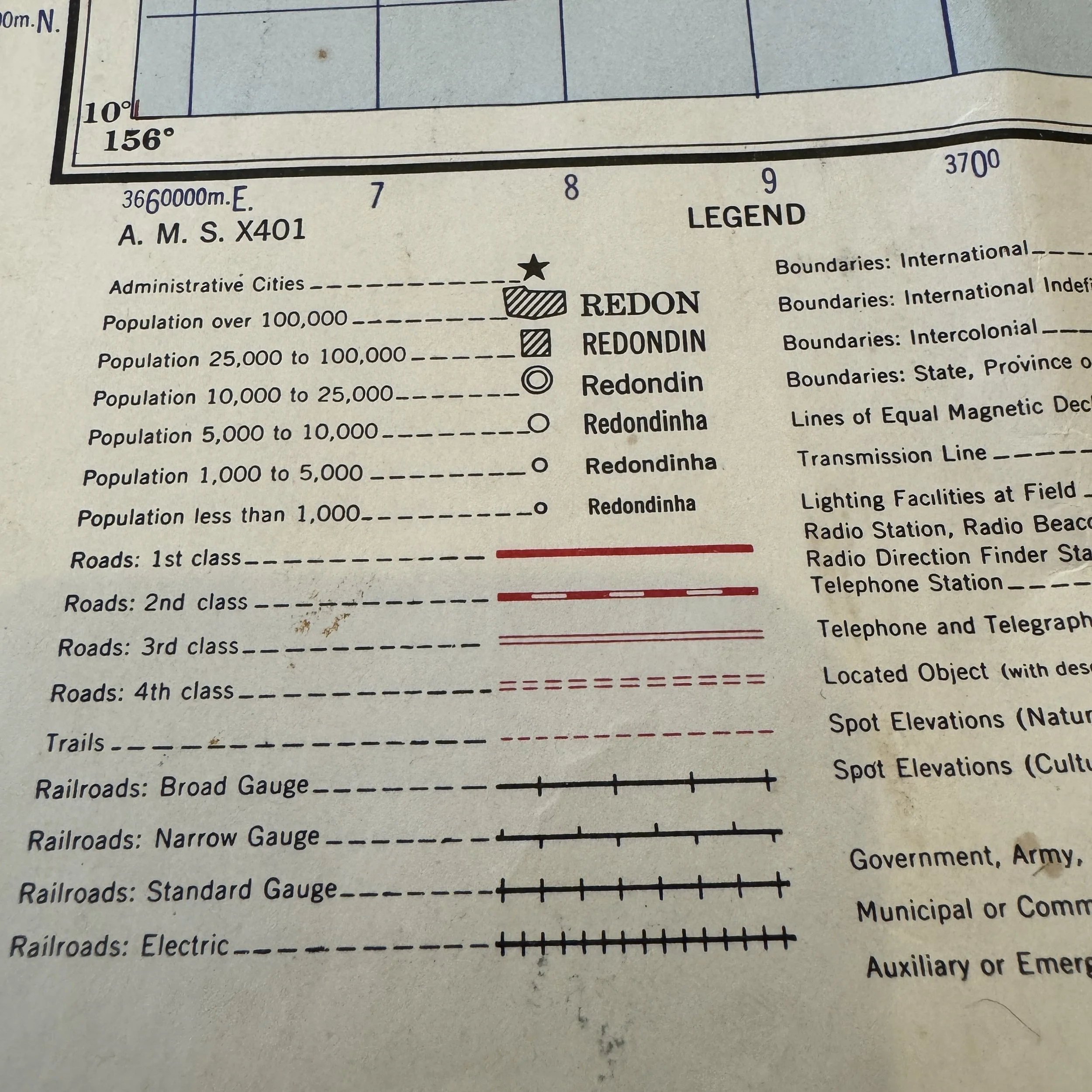





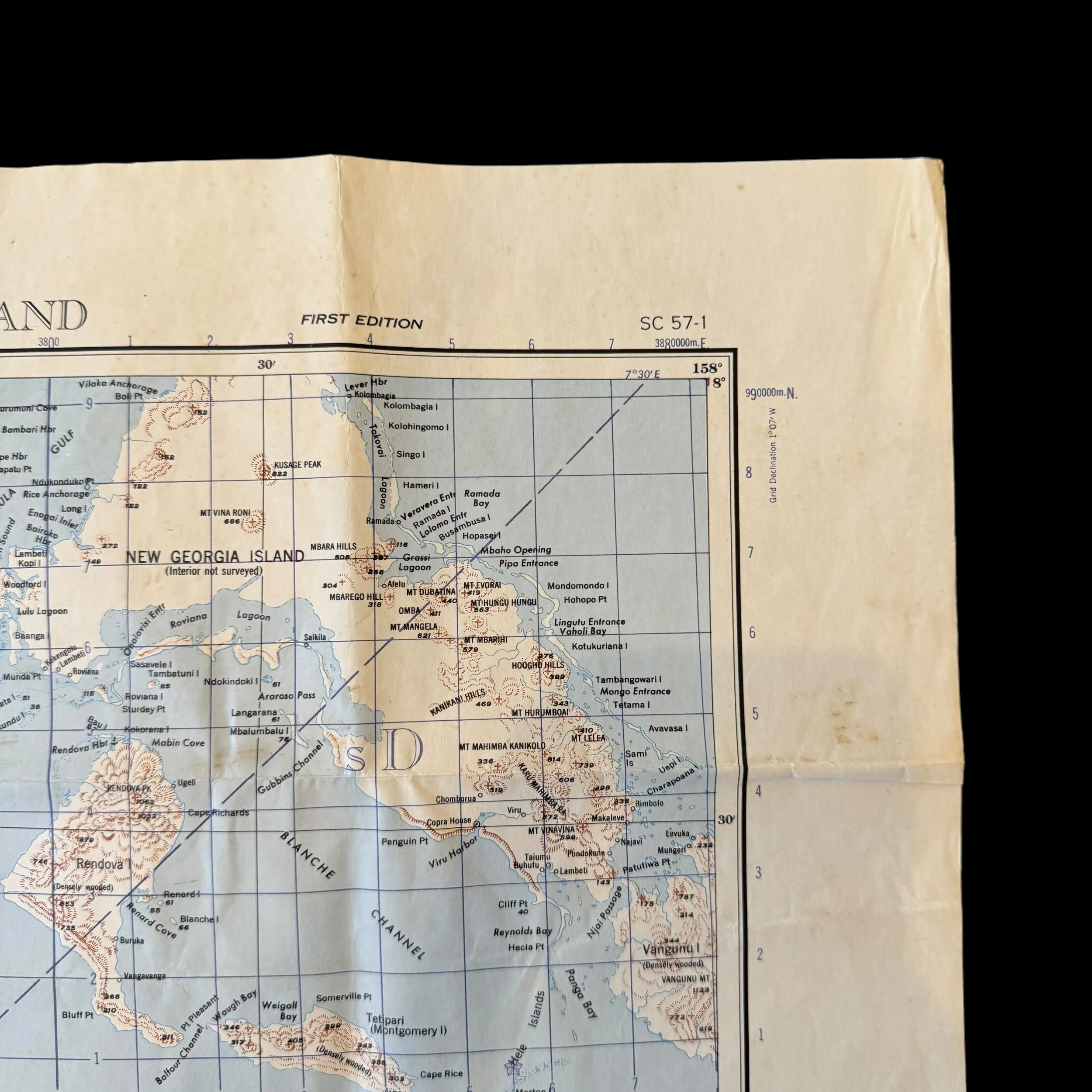
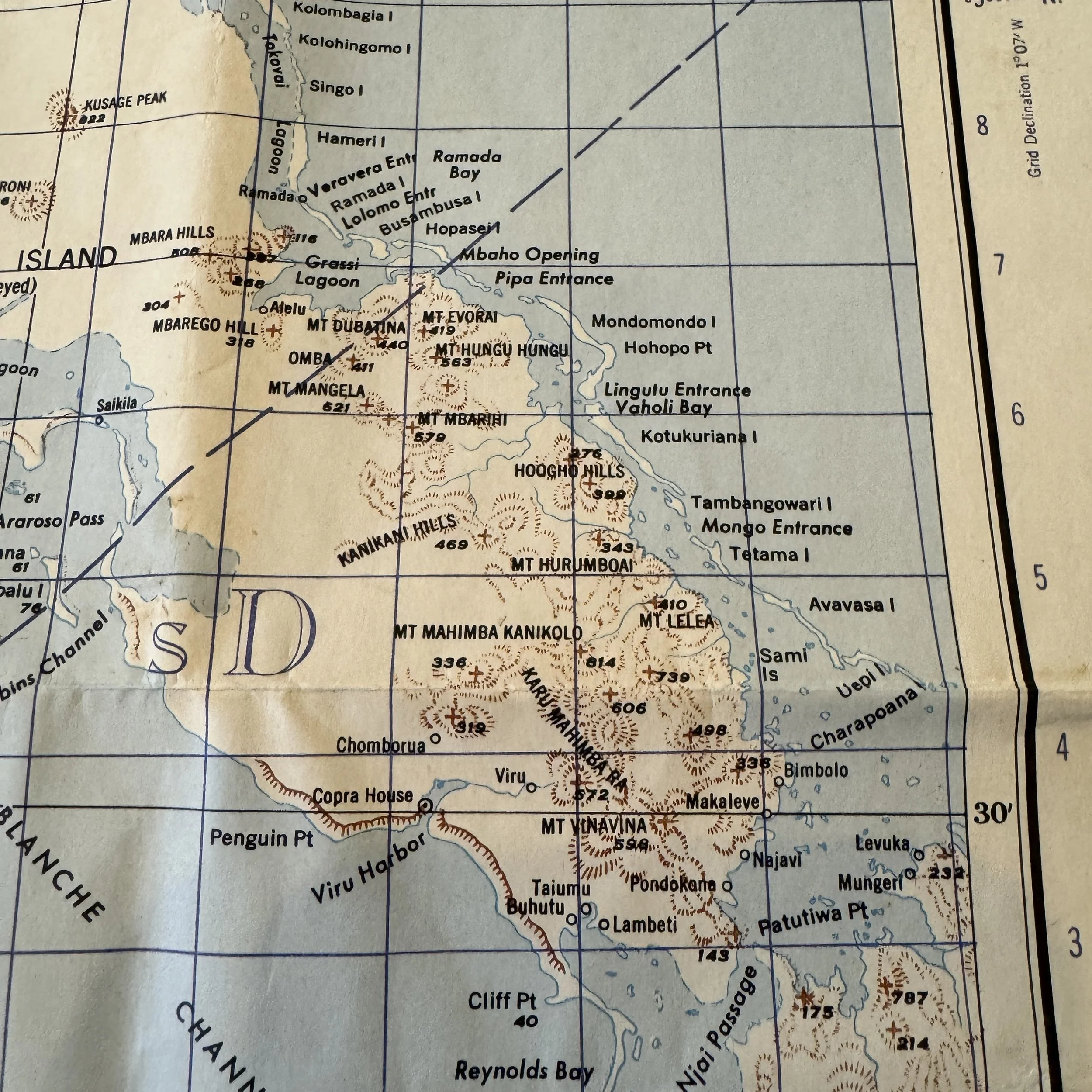
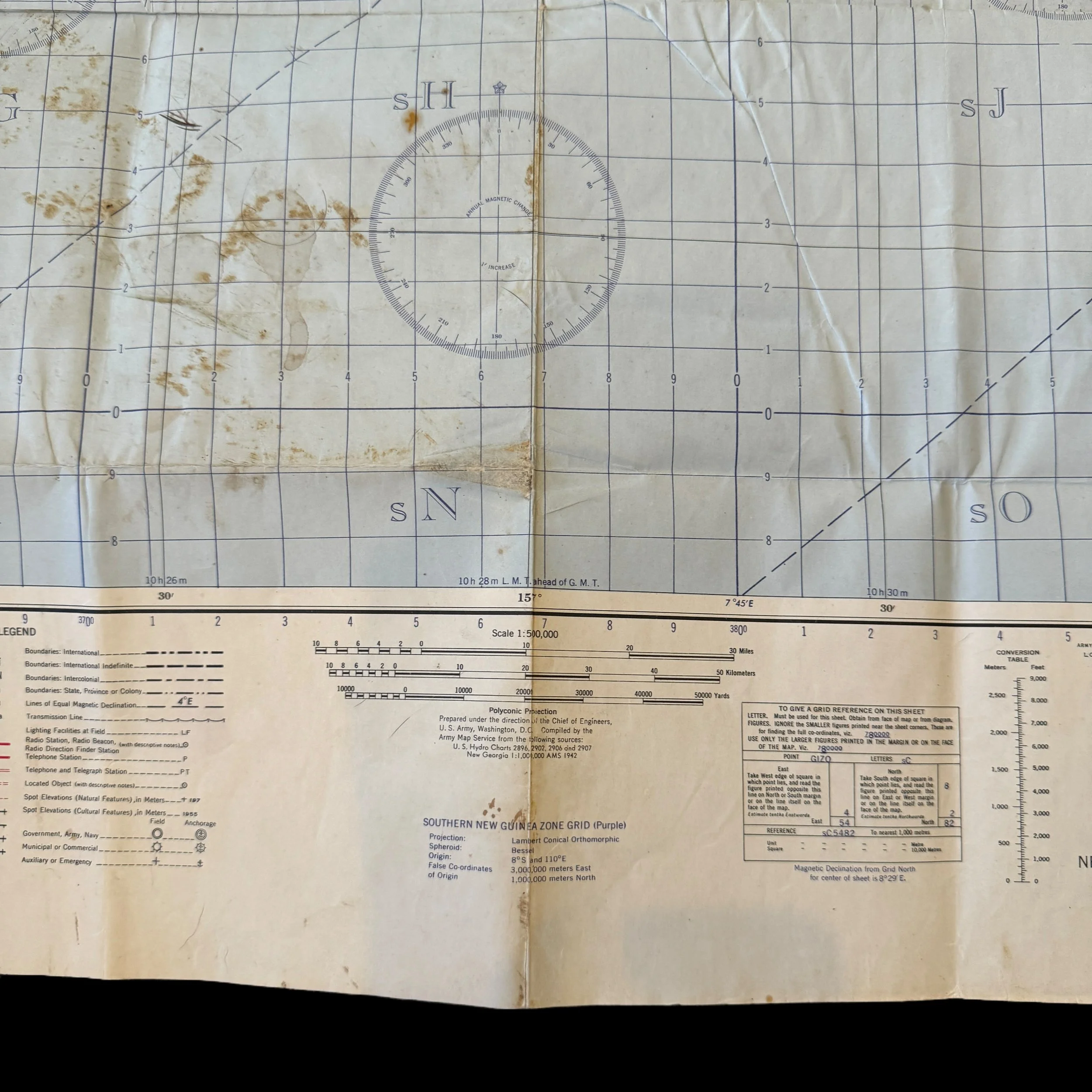

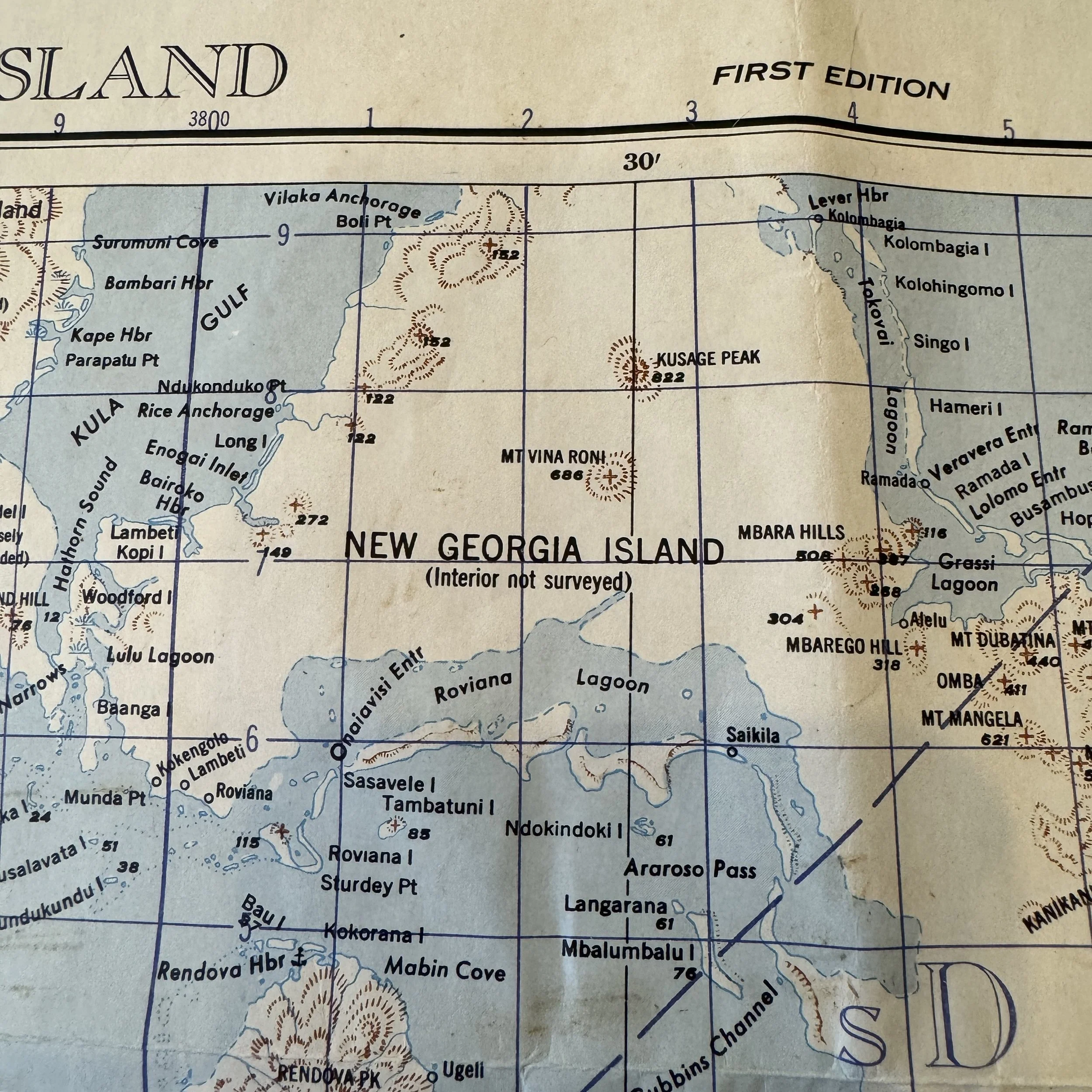

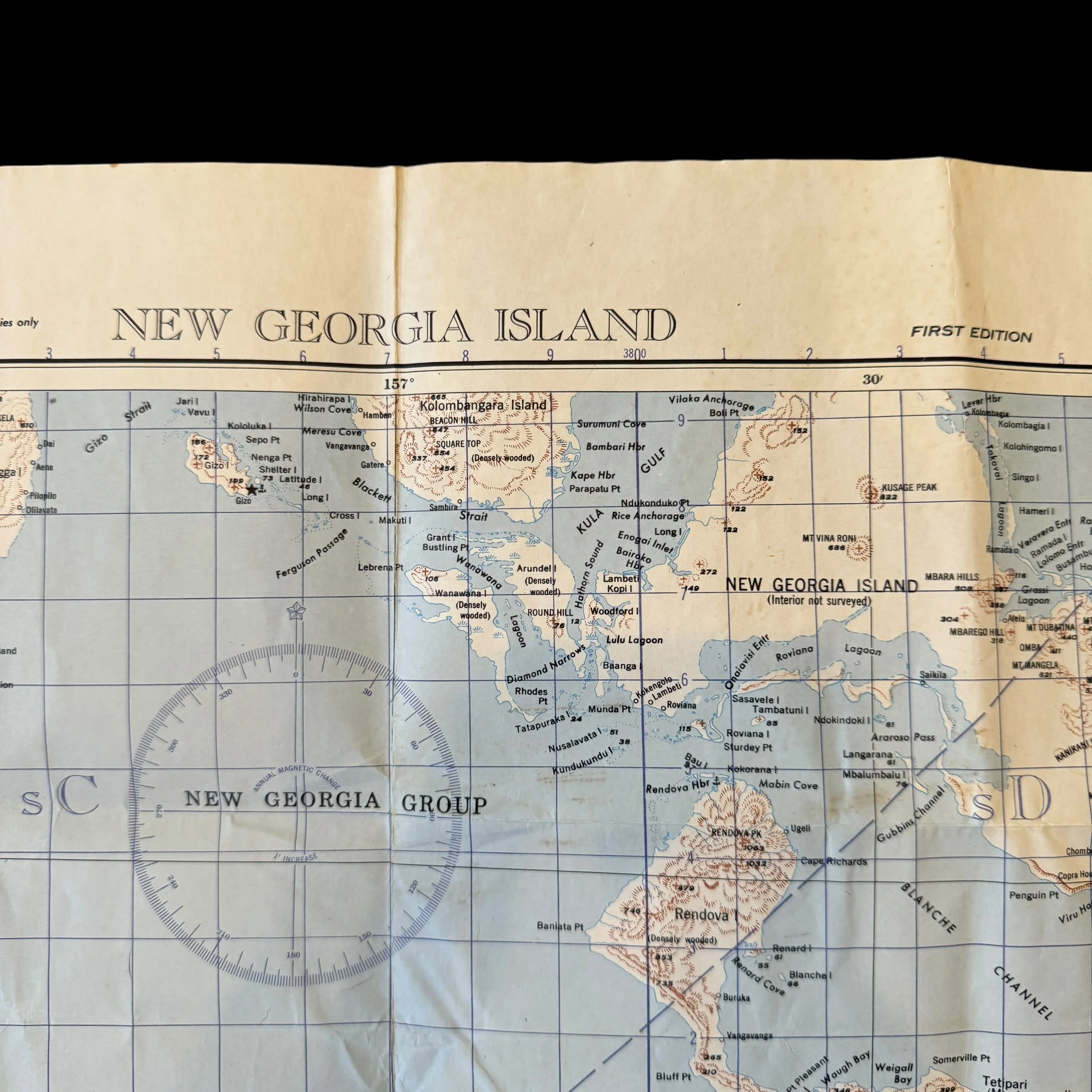
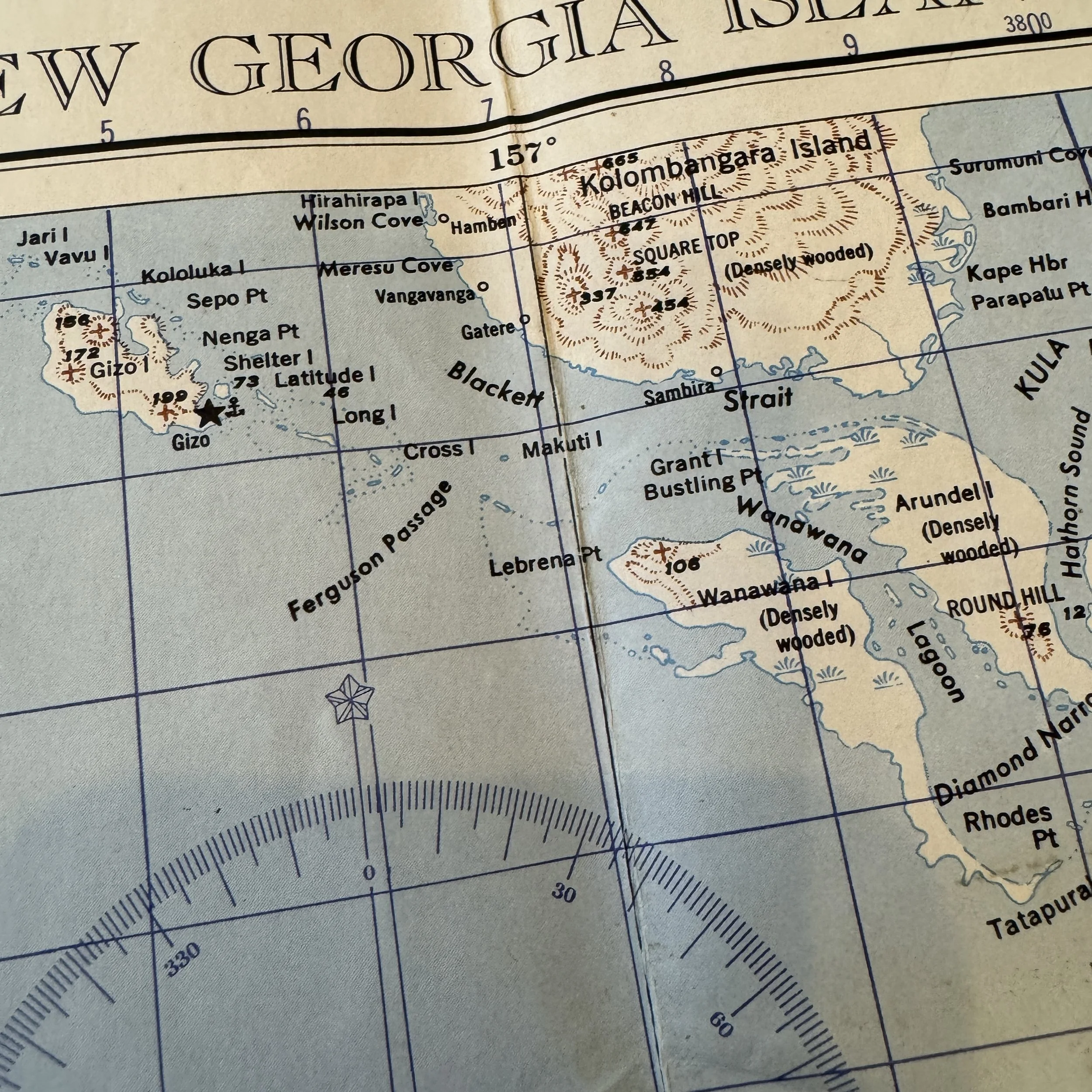




RARE! WWII 1942 Operation Cartwheel New Georgia "Solomon Islands" Pacific Theater Combat Map
Comes with hand-signed C.O.A.
This incredibly rare and museum-grade WWII Pacific Theater “FIRST EDITION” 1942 dated New Georgia combat map shows heavy theater use as it was used during Operation Cartwheel in the Pacific Theater. The Battle of New Georgia, part of the broader Operation Cartwheel, was a significant campaign during World War II that took place in the Solomon Islands from June 20 to August 25, 1943. This campaign was pivotal for the Allies as it aimed to neutralize the Japanese base at Rabaul and establish control over the central Solomon Islands, thereby facilitating further advances towards Japan. The battle exemplified the complexity and brutality of jungle warfare and highlighted the strategic importance of airfields in the Pacific Theater.
Strategic Importance of New Georgia
The New Georgia Group of islands is located in the central Solomon Islands, northwest of Guadalcanal. The Japanese had established several strongpoints in the area, most notably an airfield at Munda Point on New Georgia Island. This airfield allowed the Japanese to launch air operations against Allied positions and shipping routes, making it a significant threat to the Allied advance.
The main objective of the Allied forces was to capture Munda Point airfield and other key positions in the New Georgia Group to ensure control over the central Solomons. This would not only deny the Japanese a strategic base but also provide the Allies with a forward base of operations, paving the way for further offensives towards Bougainville and eventually Rabaul.
Planning and Initial Landings
The campaign was meticulously planned as part of Operation Cartwheel, which was a series of amphibious assaults aimed at bypassing and isolating the heavily fortified Japanese base at Rabaul. The New Georgia Campaign was divided into several phases, beginning with the seizure of smaller islands to secure staging points for the main assault.
The initial landings began on June 20, 1943, with Allied forces, primarily U.S. Army and Marine units, targeting the outlying islands of the New Georgia Group. The first significant engagement occurred on Rendova Island, located southeast of New Georgia. The landings on Rendova were met with relatively light resistance, allowing the Allies to quickly establish a beachhead and begin constructing supply bases and artillery positions to support the upcoming assault on Munda Point.
The Assault on New Georgia
The main assault on New Georgia commenced on June 30, 1943, with landings at several key locations, including Zanana Beach and Wickham Anchorage. The primary focus was on capturing the Munda Point airfield, which was defended by a well-entrenched Japanese garrison.
Zanana Beach and Wickham Anchorage
The landings at Zanana Beach were intended to serve as a jumping-off point for the main advance towards Munda. However, the dense jungle terrain and strong Japanese defensive positions made progress slow and difficult. The Allies faced fierce resistance, with Japanese forces utilizing well-camouflaged bunkers, artillery, and machine-gun nests to delay the advance.
At Wickham Anchorage, U.S. forces aimed to secure a key supply route and disrupt Japanese movements in the area. The landings faced heavy opposition, but after several days of intense fighting, the Allies managed to secure the anchorage, facilitating further operations in the region.
The Battle for Munda Point
The battle for Munda Point was the centerpiece of the New Georgia Campaign. The Japanese defenders, under the command of General Minoru Sasaki, had constructed a formidable network of fortifications, including trenches, bunkers, and artillery positions. The dense jungle and swampy terrain further complicated the Allied advance.
From early July, the Allies launched a series of attacks aimed at encircling and capturing the airfield. These operations were characterized by brutal close-quarters combat, with both sides suffering heavy casualties. The U.S. forces employed artillery barrages, air strikes, and coordinated infantry assaults to break through Japanese defenses.
One of the key battles occurred at the Enogai Inlet and Bairoko Harbor, where U.S. Marine Raiders and Army troops attacked Japanese positions to prevent reinforcements from reaching Munda. The fighting was intense, and although the Allies managed to inflict significant damage, the Japanese continued to resist tenaciously.
The Turning Point
The turning point in the battle came in late July and early August when Allied forces managed to penetrate the Japanese defenses and close in on Munda Point. The relentless pressure applied by the U.S. forces, combined with superior artillery and air support, gradually wore down the Japanese defenders.
On August 5, 1943, after weeks of grueling combat, the Allies finally captured the Munda Point airfield. The fall of Munda marked a significant victory for the Allies, as it deprived the Japanese of a critical airbase and allowed the Allies to establish their own air operations in the central Solomons.
Securing the Rest of New Georgia
With Munda Point secured, the Allies turned their attention to mopping up remaining Japanese forces on New Georgia and the surrounding islands. Operations continued throughout August, with U.S. troops capturing key positions such as Bairoko Harbor and Arundel Island. These actions further solidified Allied control over the New Georgia Group and ensured the security of the newly captured airfield.
The final phase of the campaign involved clearing out Japanese resistance in the northern part of New Georgia and the nearby islands. By late August, organized Japanese resistance had largely been eliminated, and the Allies had secured the entire New Georgia Group.
The Aftermath and Strategic Impact
The successful conclusion of the New Georgia Campaign had far-reaching implications for the Pacific Theater. The capture of the Munda Point airfield and other strategic positions provided the Allies with a crucial forward base for air and naval operations. This, in turn, facilitated further advances towards Bougainville and Rabaul, which were key objectives in the broader strategy of isolating and neutralizing major Japanese bases.
The campaign also demonstrated the effectiveness of coordinated amphibious assaults, jungle warfare tactics, and the integration of air, land, and sea forces. The lessons learned during the New Georgia Campaign were applied in subsequent operations, contributing to the overall success of the Allied war effort in the Pacific.
The Battle of New Georgia was a critical campaign in the Pacific Theater of World War II, marked by intense fighting, strategic importance, and significant Allied victories. The capture of the Munda Point airfield and the subsequent consolidation of the New Georgia Group were essential steps in the Allied advance towards Japan.
The campaign showcased the determination and resilience of Allied forces as they overcame formidable Japanese defenses and harsh jungle terrain. It also highlighted the strategic importance of airfields in the Pacific war, with control of these installations proving crucial for both offensive and defensive operations.
Overall, the Battle of New Georgia played a vital role in shifting the balance of power in the Pacific, setting the stage for further Allied successes and contributing to the eventual defeat of the Japanese Empire.